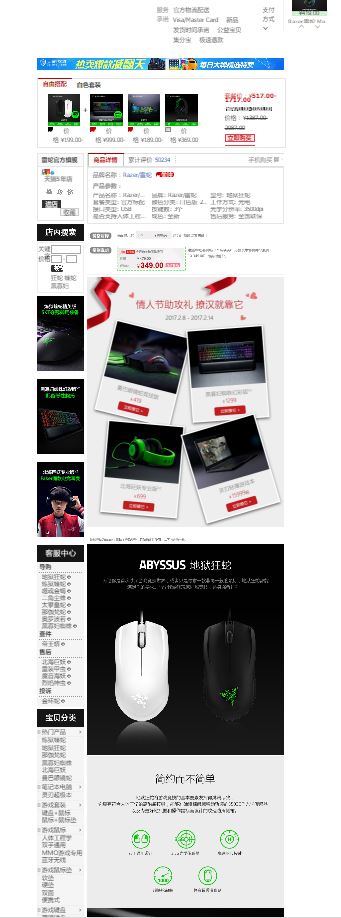Though mobile payment adoption has been slower in the US than in Asia, the majority of all internet consumption now takes place on a mobile device, whether you live in Beijing or Boston. Given these trends, if your brand isn't optimized for the mobile experience through every stage of the shopper journey, you're probably leaving money on the table.
WEBINAR: How Unilever is Driving Online Conversions with a Mobile First Strategy: EMEA US
It's an Omnichannel World, We're Just Living in it
Just a few years ago, it may have made good sense to consider mobile and desktop as distinct channels. The technical capabilities of mobile devices, data rates, and even the type of consumer were all very different. However, in today's world, with consumers seamlessly switching between their devices—and oftentimes second-screening—shoppers do not make such defined distinctions. To them, it's all one brand experience regardless of device. They expect the shopping cart on their laptop to match what they see on their phone. While in store, they want to quickly price check items and compare features.
Shoppers also turn to online product research to get detailed information, comparison shop, and even read product Ratings and Reviews—all things that they usually can’t get from product packaging alone. More and more shoppers research products via mobile even while in-store, often while holding their device in one hand and a product in the other. In fact, 39% of in-store buyers will read online reviews before purchasing.They also expect to place orders online and have them ready for pick up when they arrive, a demand which is fueling the growth of click and collect across the country. Brands need to be ready to tackle the shopper experience as a whole, winning not just desktop and mobile, but everything the omnichannel represents.
The Mobile Shopping Experience
That said, there are going to be unavoidable difference when shopping on a large laptop screen compared to a smartphone (no matter how big those screens may get). Shoppers on mobile tend to quickly scroll vertically down a page, with large images and clear text guiding giving navigational cues. China’s Tmall is clearly designed with a mobile-native shopping experience in mind. Here, shoppers are greeted with long vertical content pages highlighting features and use cases.

This includes optimizing titles so shoppers know what they are looking at. For example, including too much product information in the front of a product name such as “12 pack 30 oz sugar free” can take up valuable screen real estate. In regards to search results, a mobile user will see fewer results at a time (most screens can only surface 2-3 results at once). This puts even more pressure on brands to rank highly. All of a sudden first page results are not good enough—brands needs to aim to be in the top three.
Therefore brands have get clear on information hierarchy when they have limited amounts of character space for descriptions. Small images and nutritional information that are not easy to swipe through not only makes small-screen shopping unpleasant, but also hard for shoppers to read while comparing items while in-store.
Consider this use case: shoppers are using mobile platforms while in-store are rarely buying products through their mobile device, instead opting to research items and prices. If brands fail to update their Amazon or Walmart.com pages with the most recent packaging, in-store shoppers can easily get confused and opt for a rival product.
From Mobile to Screenless Shopping
With the announcement of Amazon Go, Amazon has begun to push the Internet of Things into the world of brick and mortar stores. Many shoppers are now accustomed to getting mobile notifications from brick and mortar stores, such as a Starbucks shoppers who are greeted with a notification when they pass a favorite location. But Amazon’s vision for the future is much more ambitious. Transactions at Amazon Go are completely screenless—you need an enabled mobile device for payment, but you can keep it in your pocket. While most big box retailers are not currently equipped with cameras and NFC readers, and we don’t see this being a wide-spread trend in 2017, it is clear that this is the future of omnichannel shopping. For now, brands can focus on establishing the basic building blocks of a successful ecommerce strategy so they are ready to tackle a rapidly changing landscape in the future.
WEBINAR: How Unilever is Driving Online Conversions with a Mobile First Strategy: EMEA US
Optimizing for the Mobile Shopping Experience: First Steps
There are a few missteps that brands can make that will lead to a less-than-pleasant shopping experience on a small screen. Brand managers should be aware that soon "mobile" or "mobile analytics" is not a bug but a feature. It will be key to track performance across every storefront and every channel seamlessly on a daily, weekly, or monthly basis. Content that scales to a small screen needs to be in place, Search results improved, and Review scores maximized.
Winning online means winning offline, and brands need to think of their online channel strategy holistically. In 2017 expect to continue to see the walls come down between brick and mortar, desktop, and mobile shopping—inching towards a true omnichannel experience.




